Types of sockets in the world 2022
Types of sockets in the world
Type A
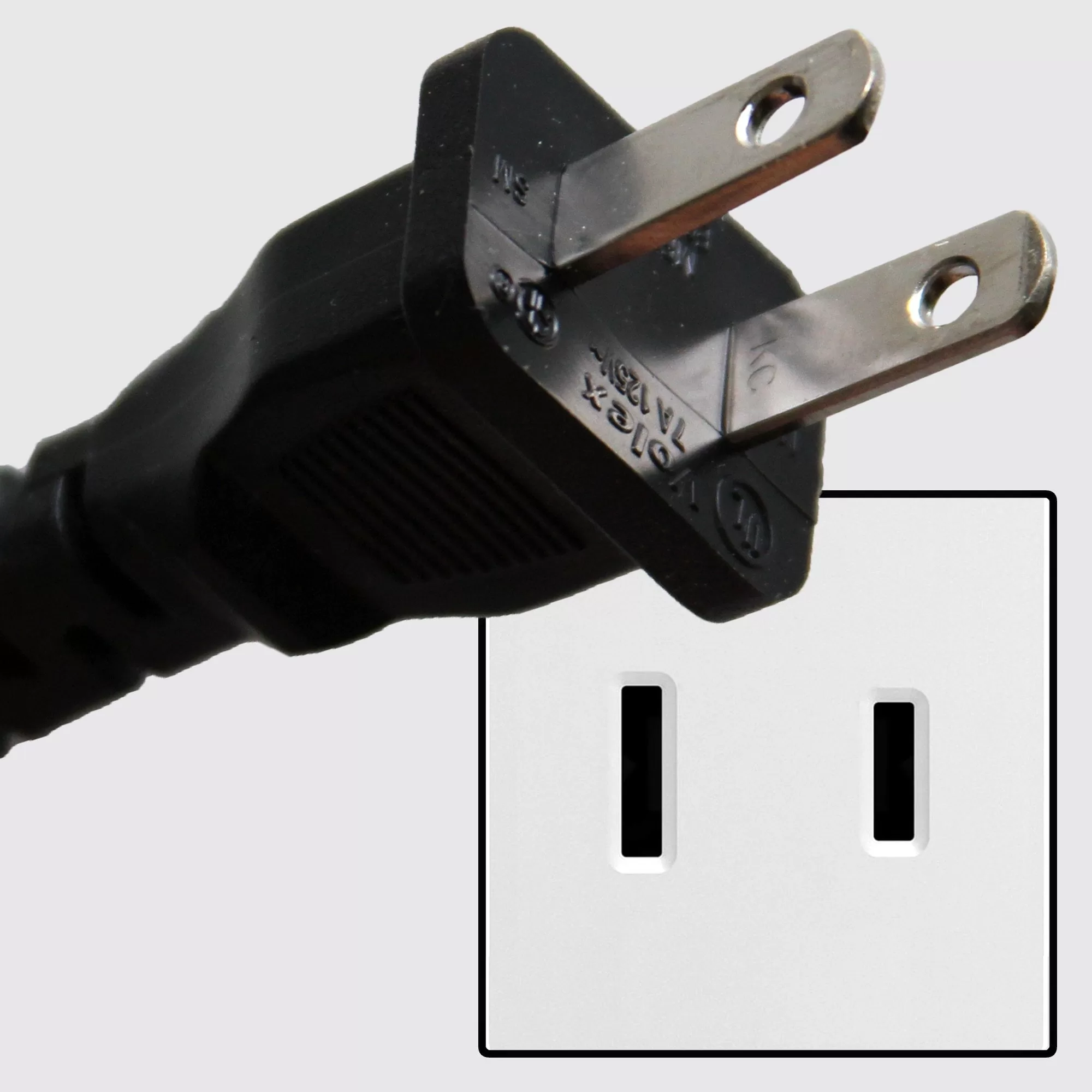
Types of sockets in the world
used in:
North and Central America, Japan
A Type A electrical plug (or flat blade plug) is an ungrounded plug with flat parallel pins.
Although the American and Japanese plugs look identical,
However, the neutral pin in the American plug is wider than the live pin.
While both pins in the Japanese plug have the same size. as a result ,
Japanese plugs can be used in the US but not the other way around.
The pins on Type A and Type B plugs have a hole near the end that fits into the “prongs” located on contact scanners in some sockets,
So that the pins are gripped more tightly allowing for better contact and also to prevent the plug from slipping out of the socket.
Some sockets have spring blades that grip the sides of the screws
, making the holes obsolete.
Type B
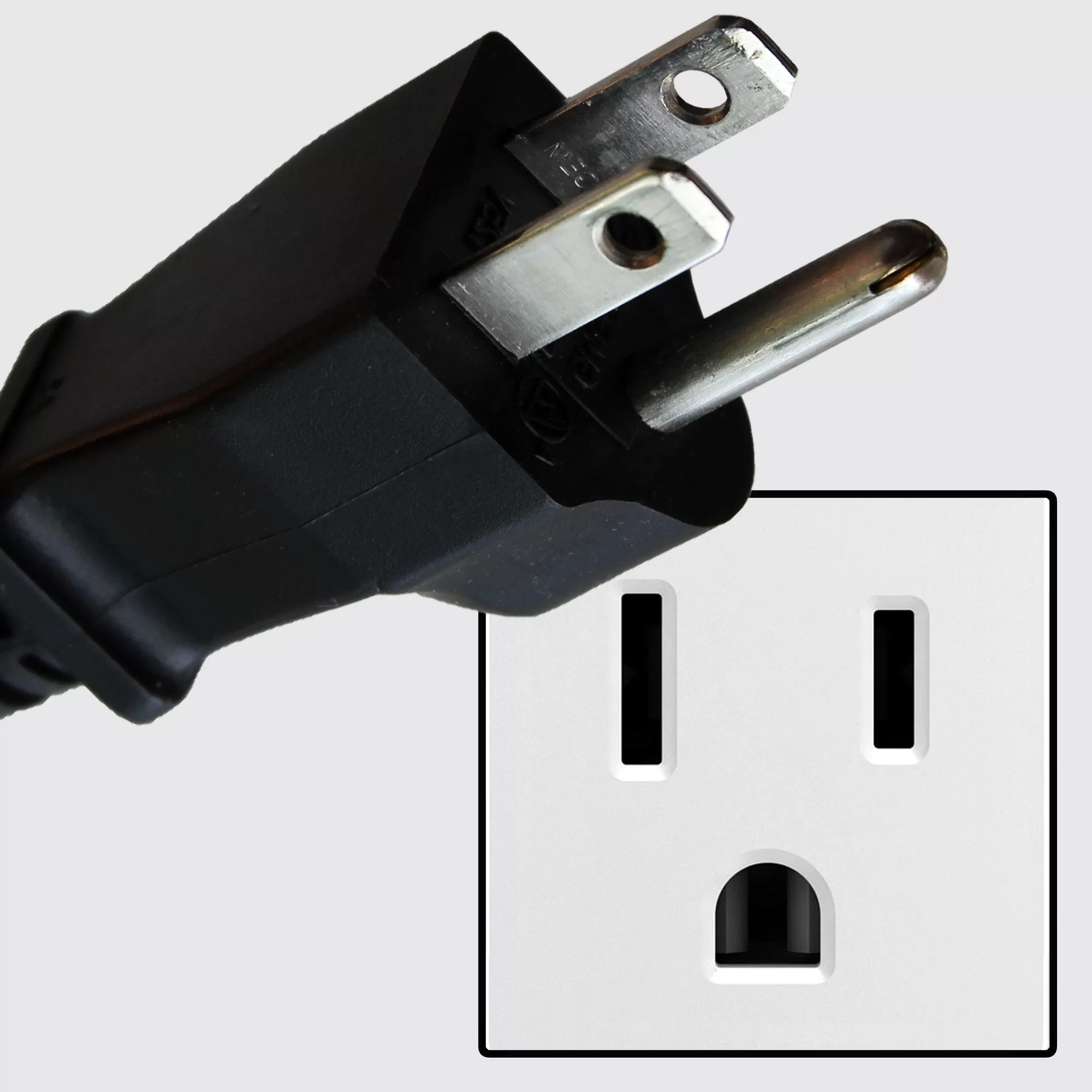 used in:
used in:
North and Central America, Japan
A Type B electrical plug has two flat parallel pins and a round ground (or ground) pin.
The ground pin is longer than the other two so that the device is grounded before power is applied.
Same as with Type A plugs
, the US and Japanese versions differ slightly.
Type B plugs are rated at 15 amps.
Type C
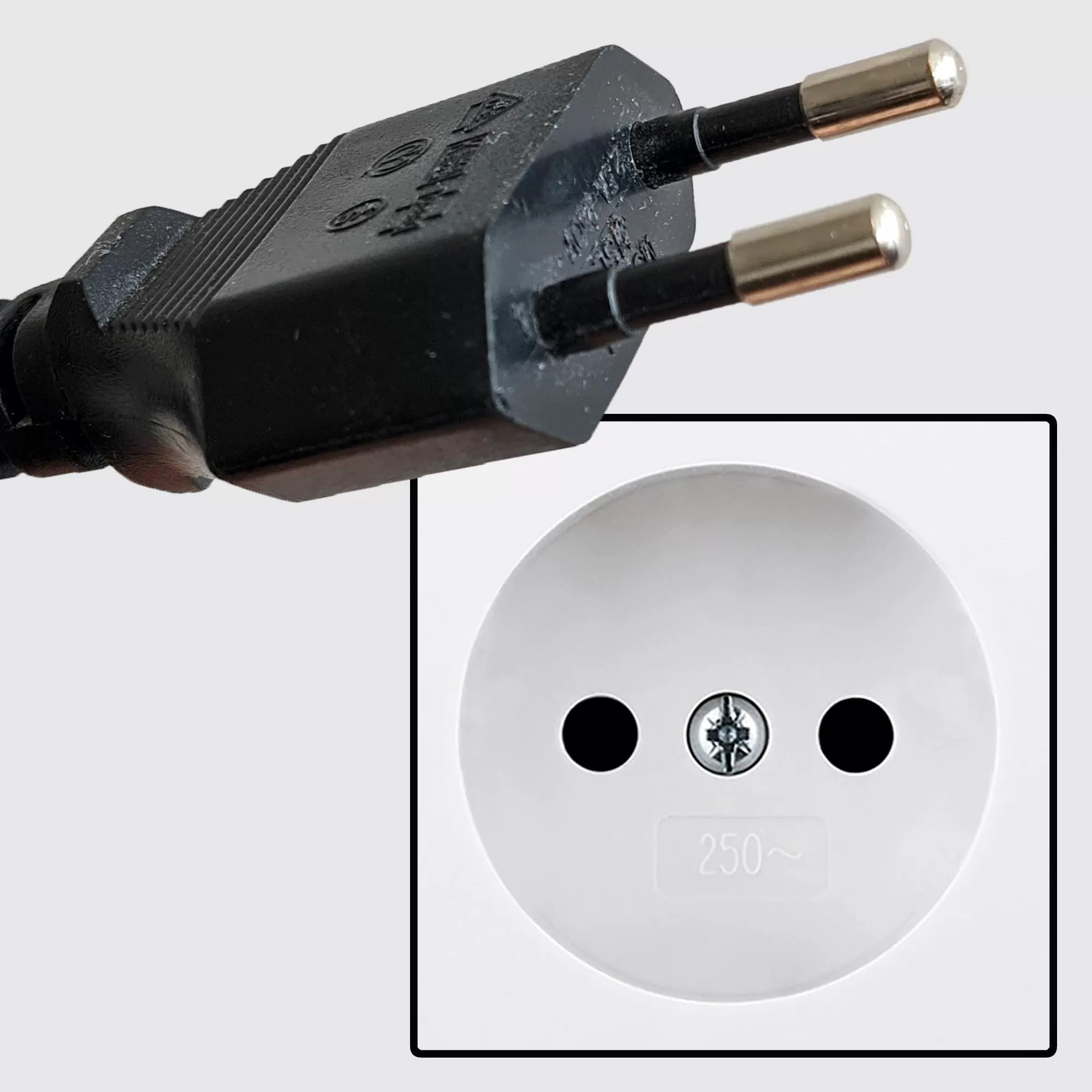 used in:
used in:
Europe, excluding the United Kingdom, Ireland, Cyprus and Malta
A Type C electrical plug (or Europlug) is a two-wire plug that has two circular pins.
Fits any socket that accepts 4.0 – 4.8mm round contacts on 19mm centers.
They are replaced with E, F, J, K or N sockets which work perfectly with Type C plugs.
Type C plugs are generally limited for use in devices that require 2.5 amps or less.
Type D
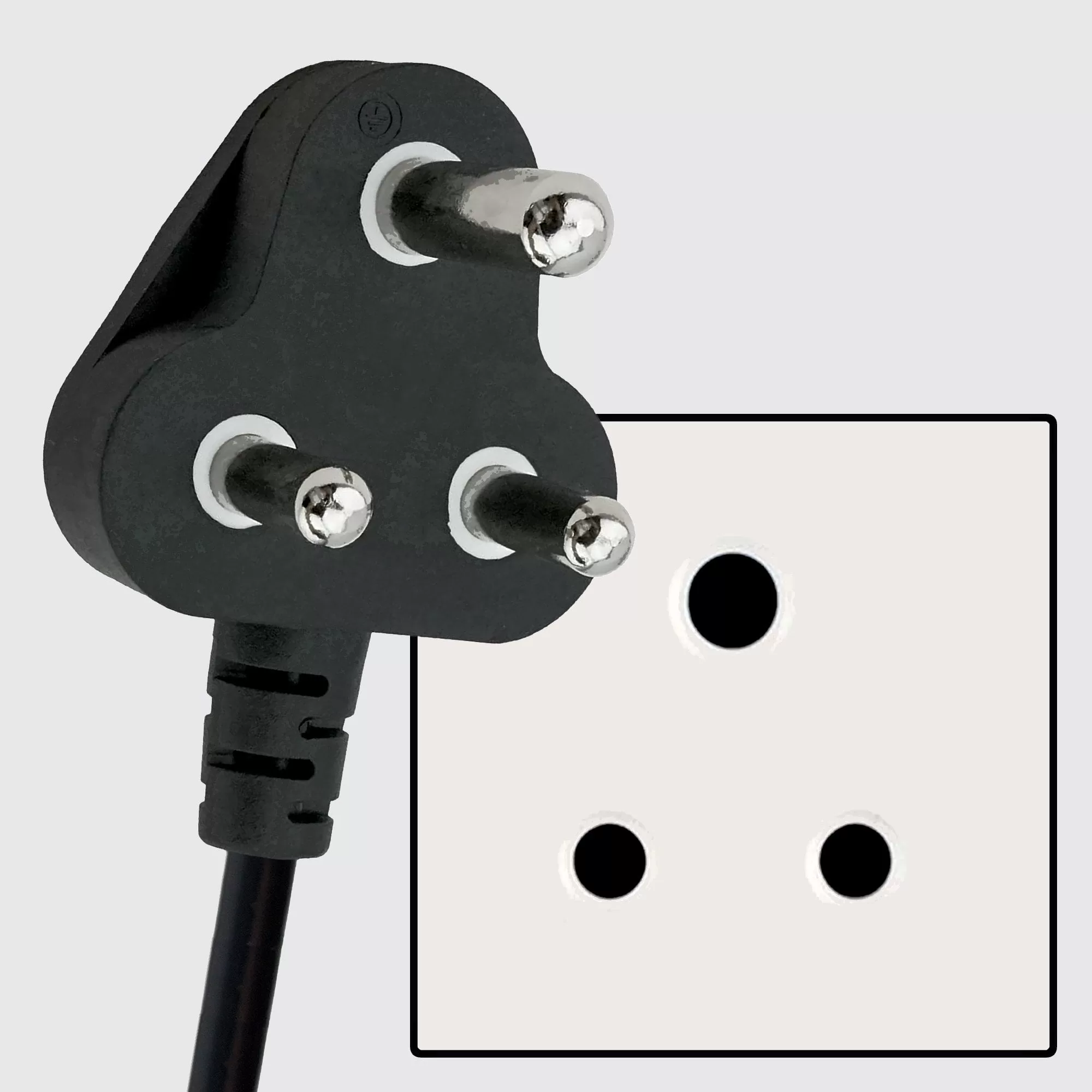 used in:
used in:
India, Sri Lanka, Nepal, Namibia
The Type D electrical plug has three large circular pins in a triangular pattern.
Type M plugs are often used in conjunction with Type D plugs for larger appliances and as a result,
Some plugs work with both Type D and Type M plugs.
Type D plugs are rated 5 amps.
Type E.
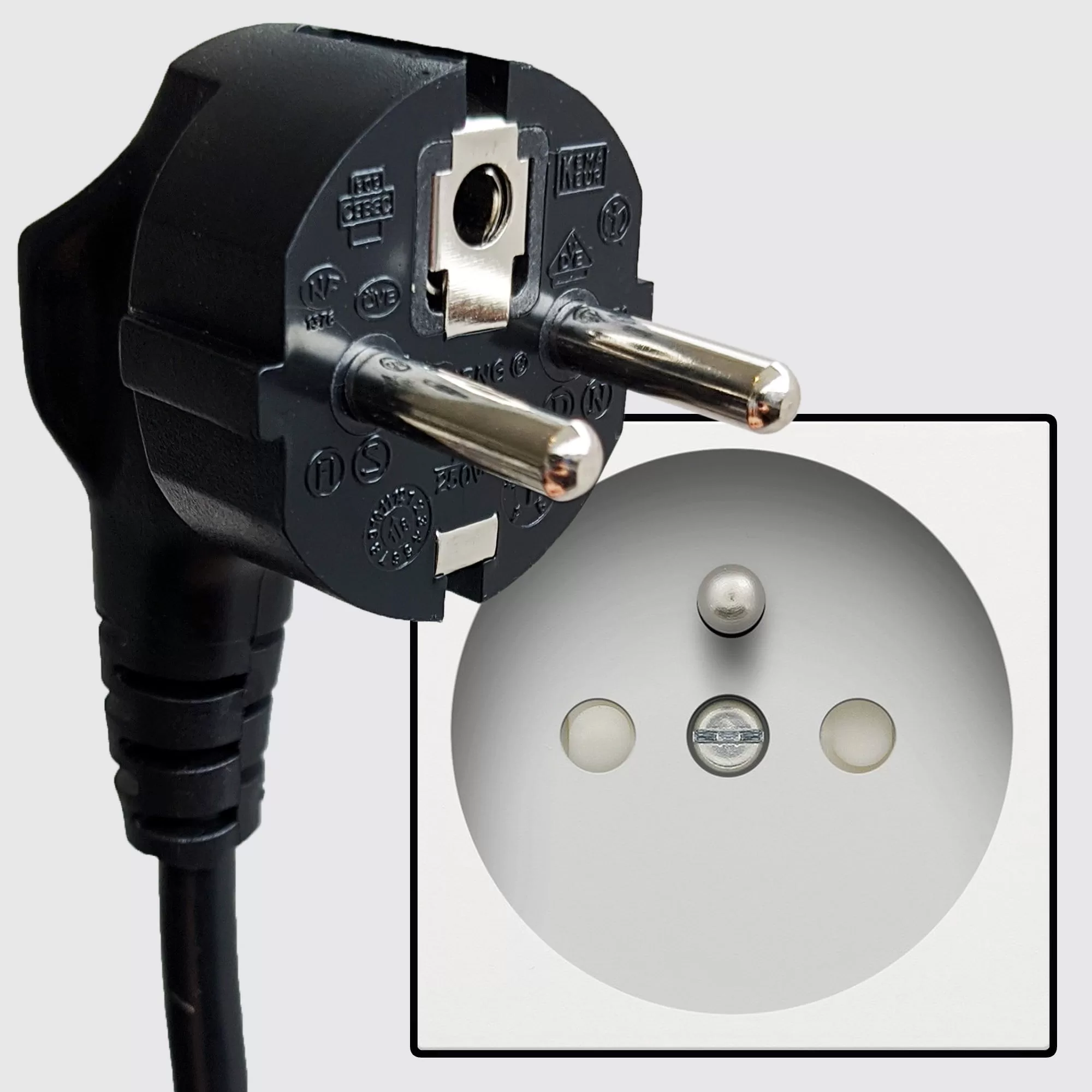 used in:
used in:
France, Belgium, Slovakia and Tunisia among others
The Type E electrical plug has 4.8mm round pins spaced 19mm apart and a hole for the plug’s male grounding screw.
The E-type plug has a round shape and the E-type plug has a round recess.
Type E plugs are rated for 16 amps.
note:
The CEE 7/7 plug was developed to work with Type E and Type F female sockets.
(to accept the grounding pin of the E-type socket) and has grounding clips on both sides (to work with F-type sockets).
Type F.
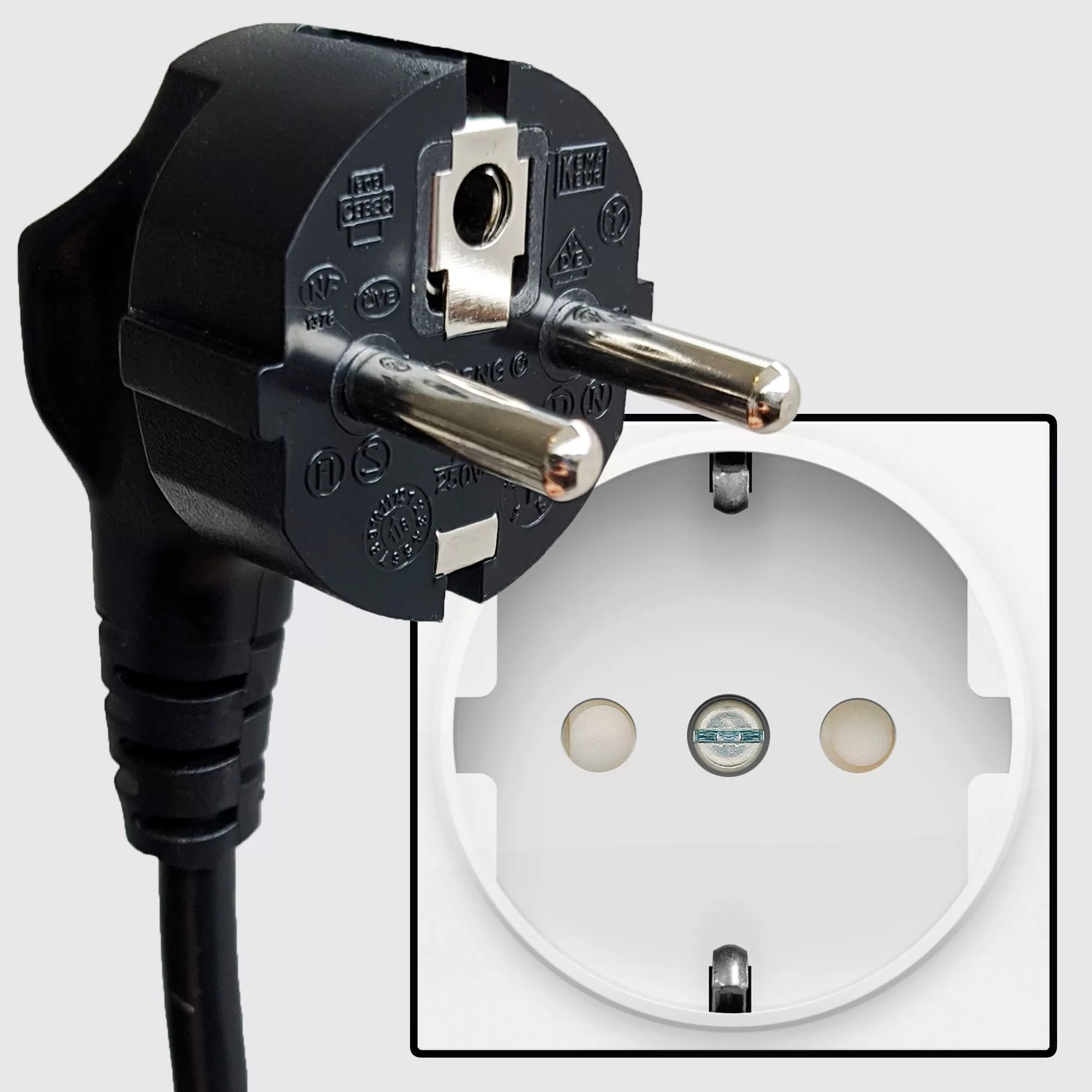 used in:
used in:
Germany, Austria and the Netherlands
Spain, among other countries

The F type electrical plug has
(also known as Schuko plug) on 4.8mm round pins spaced 19mm apart.
It is similar to the E-type socket but has two clips
Two ground on the side instead of the female ground contact.
The CEE 7/7 plug was developed to work with E sockets
F and has grounding clamps on both sides
(to work with F-type plugs) and a female connector (to accept the grounding pin of the E-type plug).
Type F plugs are rated 16 amps.
Type G
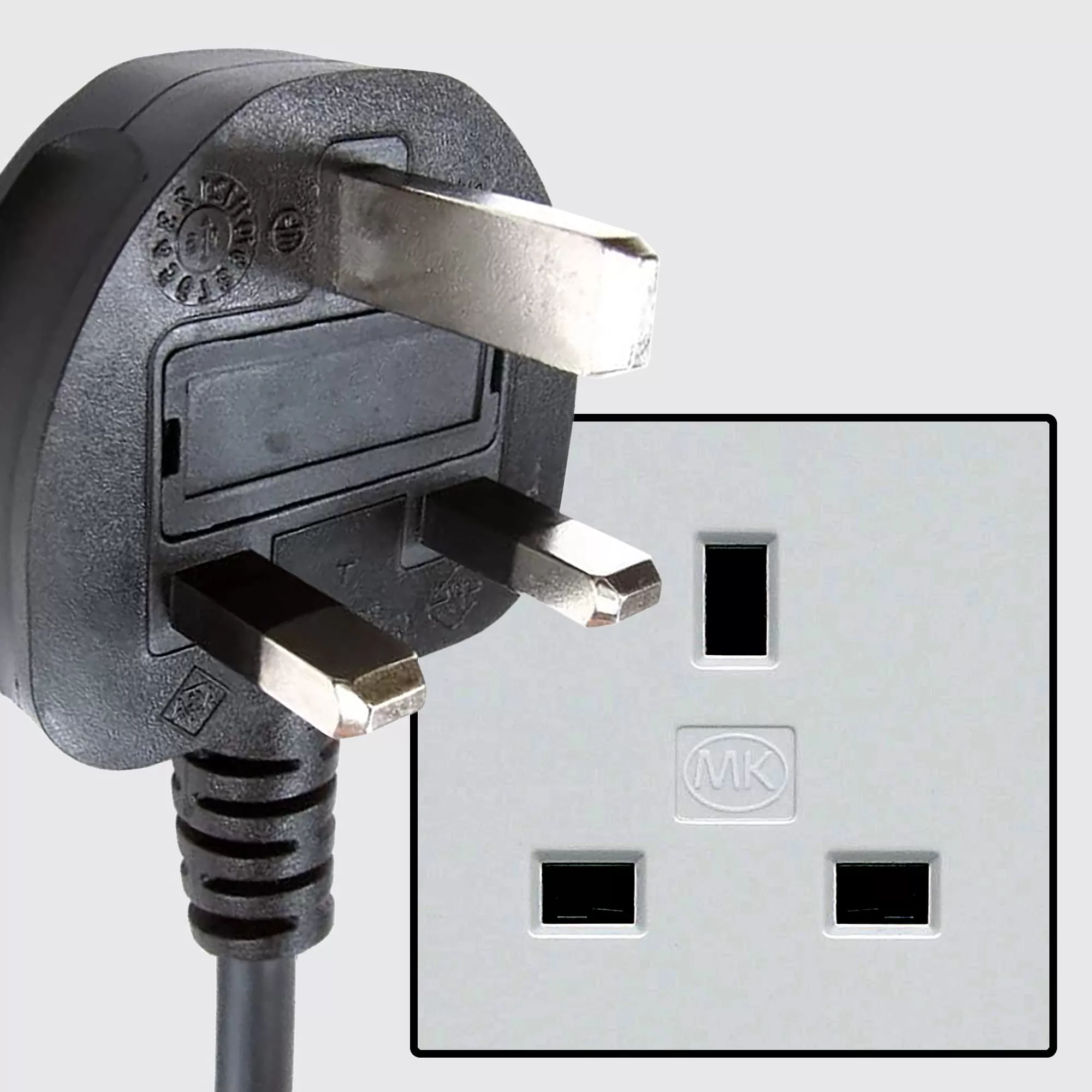 used in:
used in:
United Kingdom, Ireland, Cyprus,
Malta, Malaysia, Singapore, Hong Kong
The Type G electrical plug has three rectangular blades in a triangular pattern and has a built-in fuse
(Typically a 3 amp fuse for small appliances like computers and 13 amp fuse for heavy appliances like heaters).
British plugs have shutters on the live contacts and
Neutral so that foreign objects cannot be introduced into it.
Type H.
used in:
Israel
Worse in performance
The Type H plug is unique to Israel and has flat pins
V-shaped plus ground pin.
However ,
It is currently being phased out in favor of a circular stabilizer version.
The holes in the sockets are of the type
The H is wide in the middle to fit the bolted version of the H type plug as well as the C type plugs.
Type I
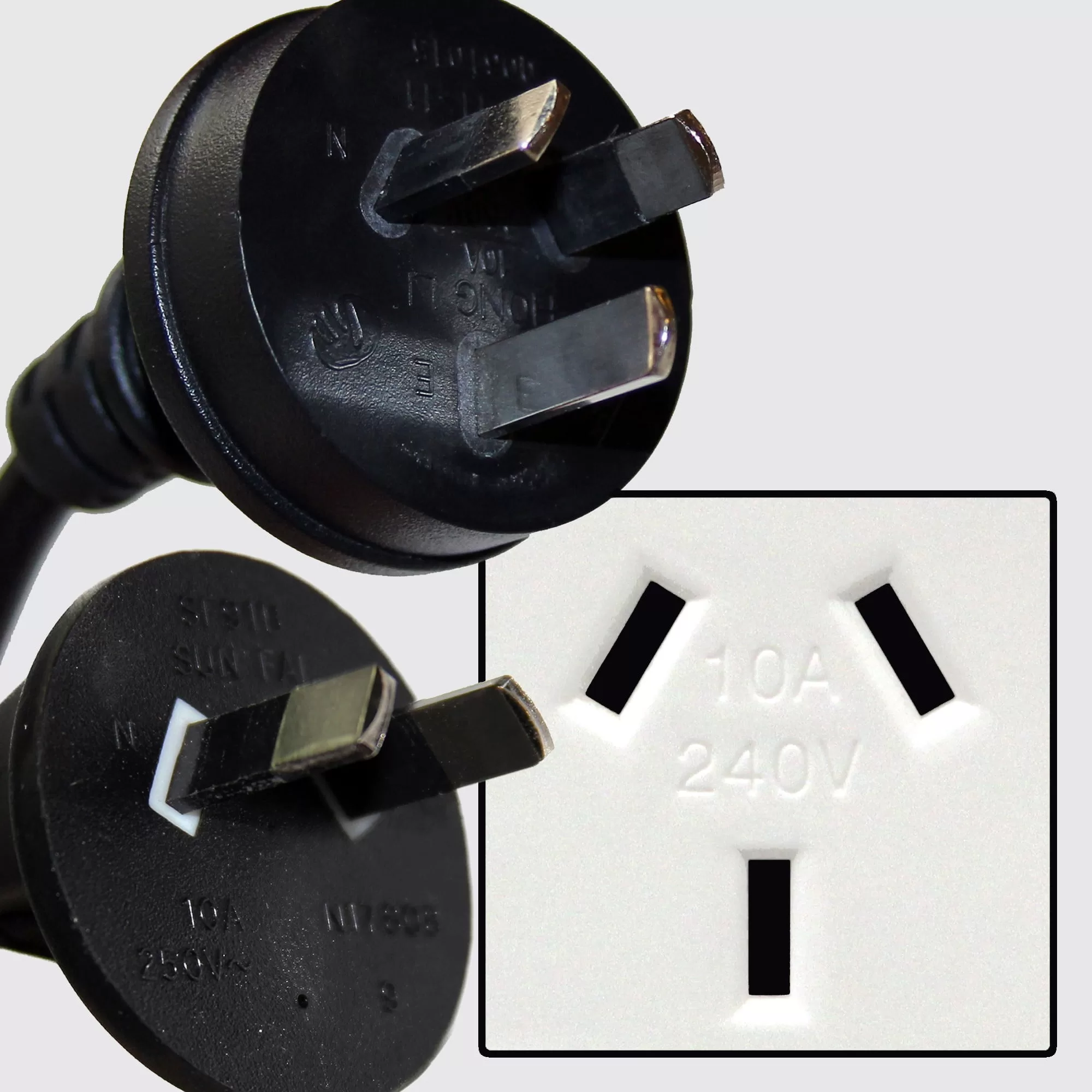 used in:
used in:
Australia, New Zealand,
Papua New Guinea, Argentina
The plug has a type
I on V-shaped flat pins plus a ground pin.
There is also a plug-in version,
Which contains only flat pins.
The Australian plug also works with plugs in China.
The delivery system is classified /
Australia standard 10 amp socket,
But there is also a plug/configuration
15 amp rated socket,
Although the ground pin is wider.
A standard 10 amp plug will fit into a 15 amp socket but not the other way around.
J type
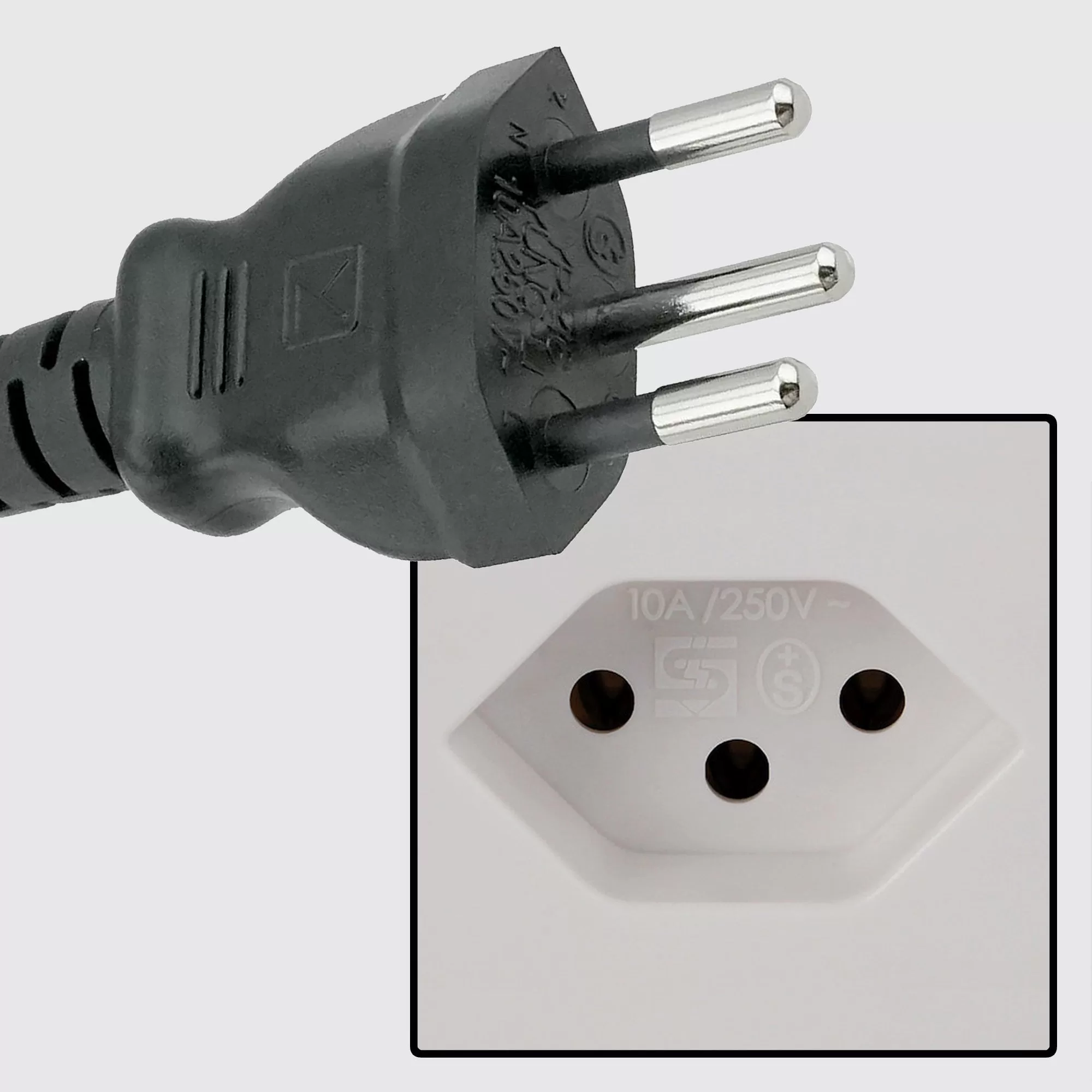
used in:
Switzerland and Liechtenstein
The J type plug has two circuit pins as well as a grounding pin.
Although the J type plug is very similar to the N type Brazilian plug
However, it is not compatible with the type socket
N as the ground pin is further from the center line than in the N type.
However ,
Type C plugs are fully compatible with Type J sockets.
Type J plugs are rated for 10 amps.
Type K.
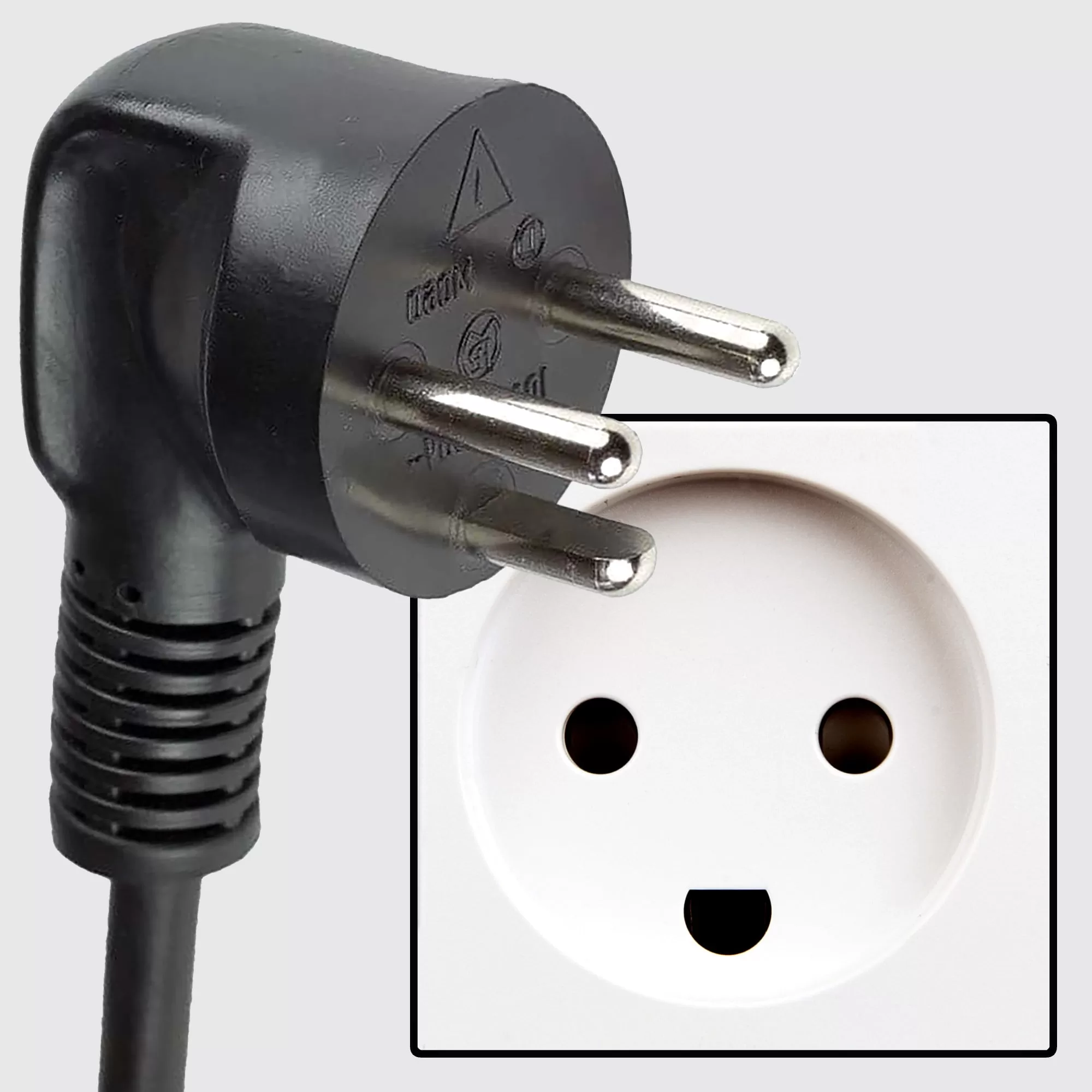 used in:
used in:
Denmark and Greenland
The plug has a type
K on the circular pins plus a ground pin.
It is similar to type F, the difference is that type
F has grounding clips instead of grounding pin.
Type C plugs are fully compatible with Type F sockets
. Type E plugs and sockets are also used in Denmark.
L type.
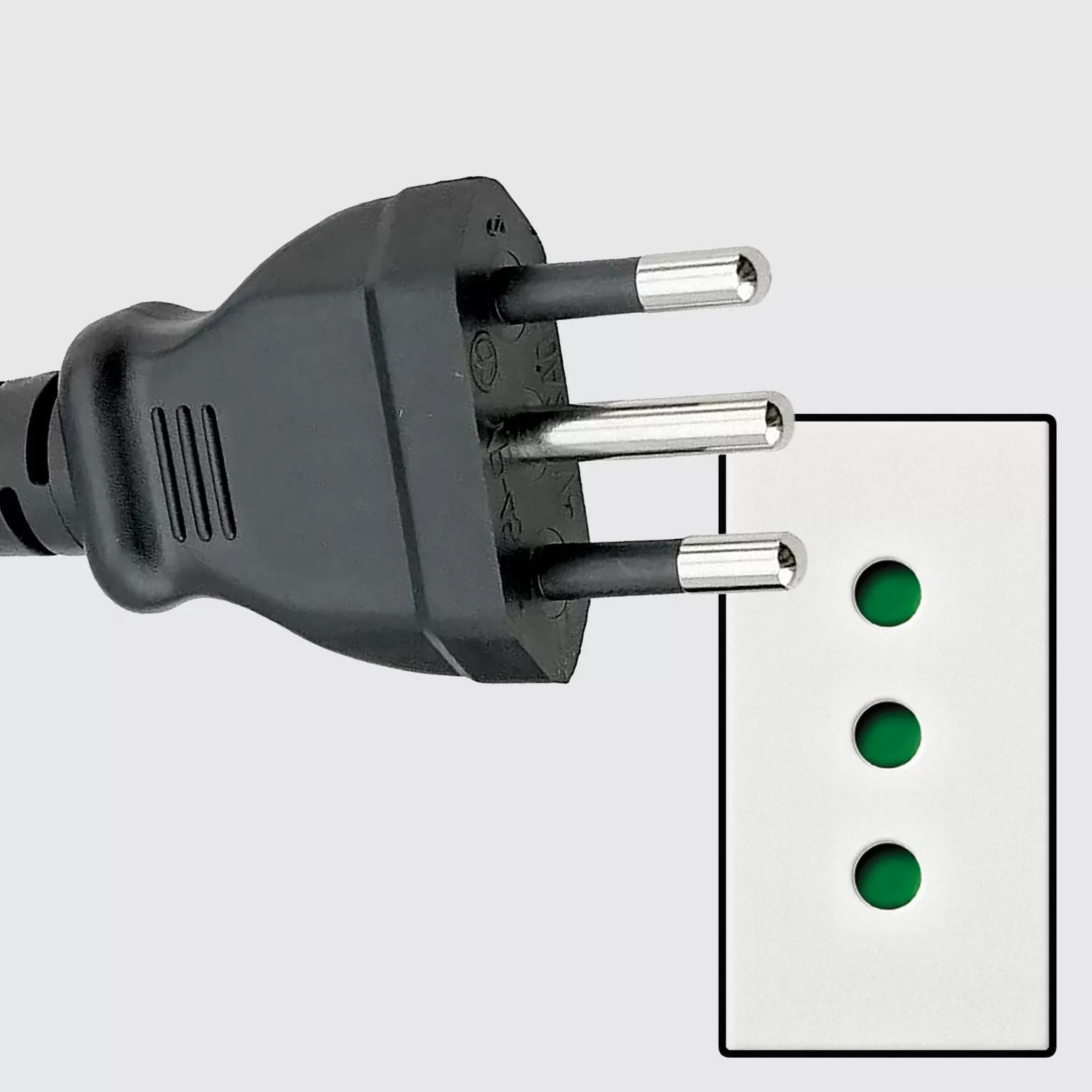 Used in: Italy
Used in: Italy
There are two different types of L type plug
, one is rated at 10 amps and the other is rated at 16 amps.
The 10 amp version has round pins that are 4mm thick and spaced 5.5mm apart,
With grounding pin in the middle.
The 16 amp version has 5mm thick round pins,
Spaced 8mm apart, plus a grounding pin.
In Italy there is a type of “universal” socket. Which includes a socket
“schuko” For plugs C, E, F, L and “bipasso” socket For L and C sockets.
Type M.
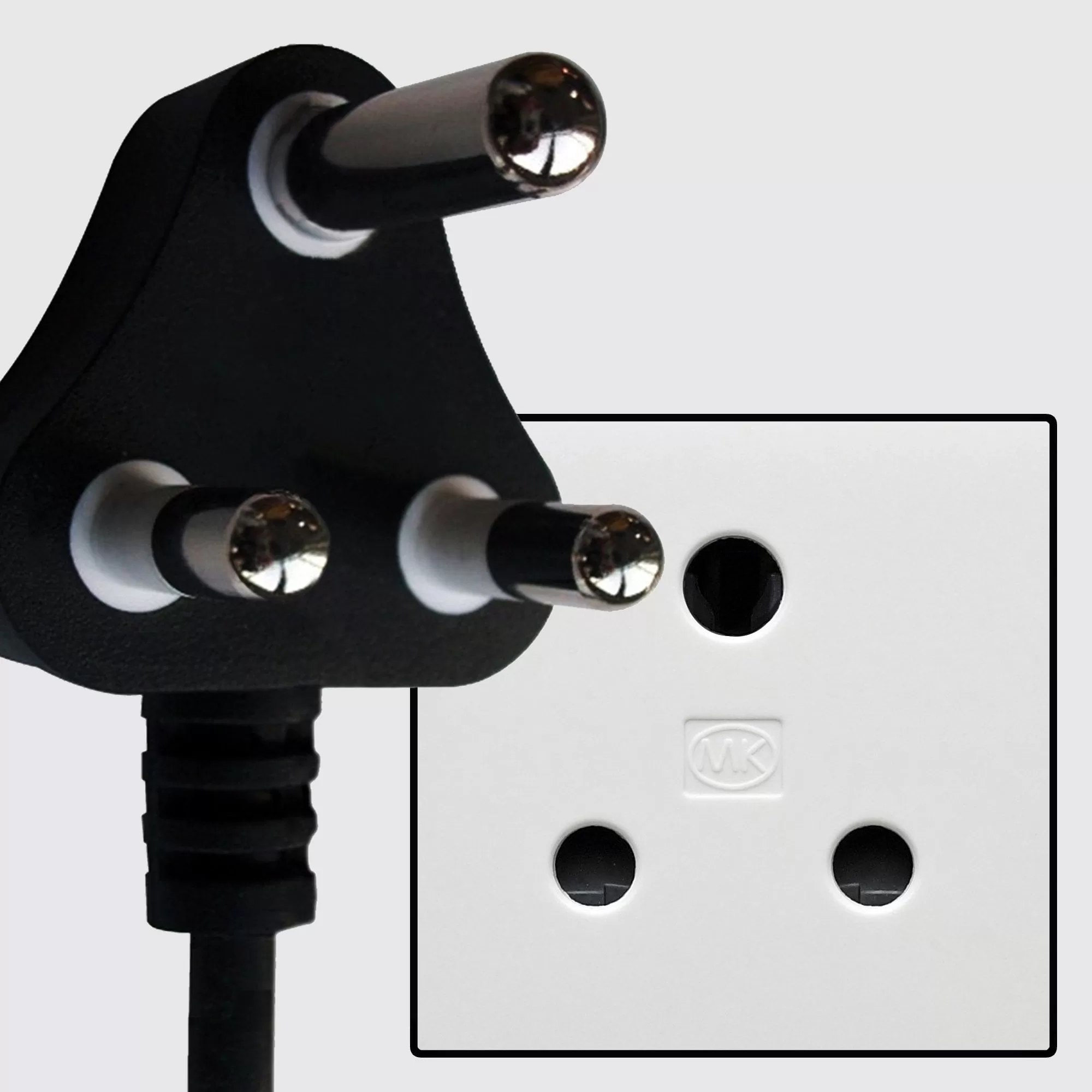 used in:
used in:
South Africa, Swaziland, Lesotho
The M type plug has three round pins in a triangular pattern and looks similar to the D type Indian plug.
, but his pins are much larger.
Type M plugs are sometimes used for larger devices in countries that use Type D plugs,
As well as in Israel (Type H)
. Therefore, plugs in these countries sometimes work with M type plugs.
N type.
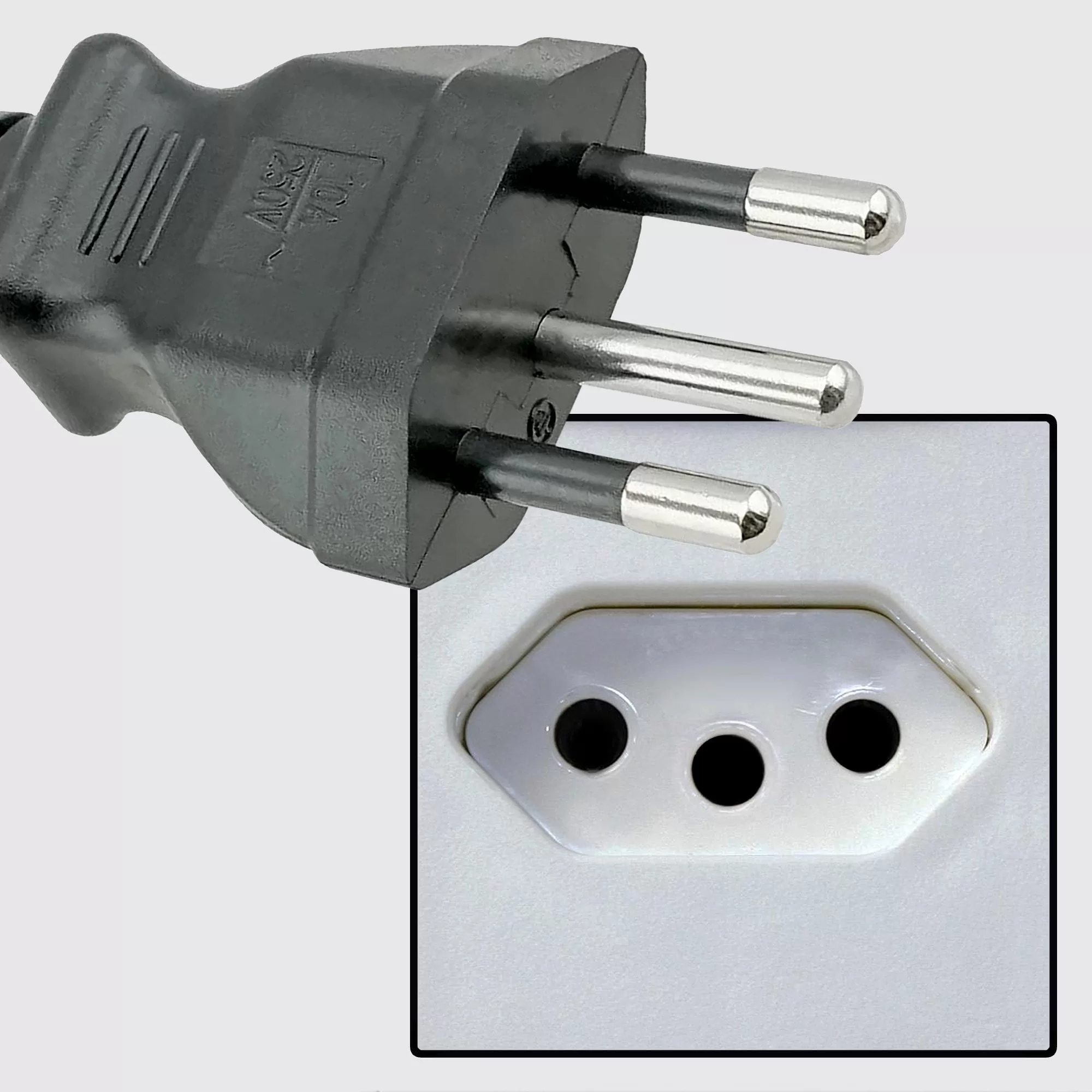 Used in: Brazil
Used in: Brazil
There are two different types of N-type components
, one is rated at 10 amps and the other is rated at 20 amps.
The 10 amp version has two 4mm round pins and a ground pin.
The 20 amp version, used for heavy appliances, has
On two 4.8mm diameter circular pins, and a ground pin.
The N-type socket is designed to work with C-type plugs as well.
Brazil is one of the few countries that uses two types of voltage.
While most states use 127 volts,
Some use 220 volts, so it’s important to know the local voltage before plugging in your device
(Note: Wrong voltage can destroy your device).
Many devices sold in Brazil are dual voltage.
Type O
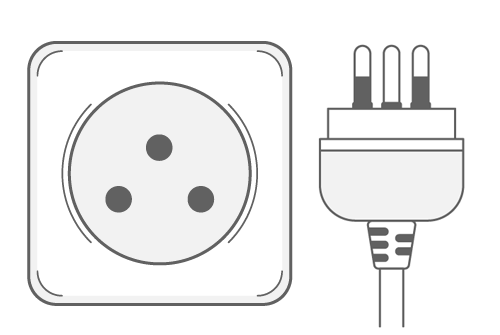 Type O is used exclusively in Thailand.
Type O is used exclusively in Thailand.
The O-type socket and plug, rated at 16 amps, is the official standard in Thailand.
The plug system was designed in 2006, but its use has not become widespread yet.
It is currently being implemented in phases. The standard is described in TIS 166-2549.
Type O consists of power pins and ground pins, which are circular and have a diameter of 4.8mm.
The power pins are 19mm long, have 10mm long insulated sleeves and are centered 19mm apart.
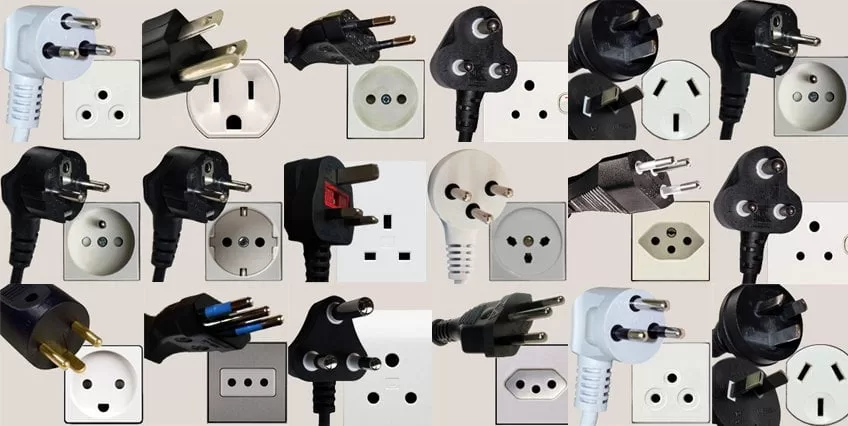 Discover the types of plugs in the world before you travel
Discover the types of plugs in the world before you travel
Your mobile phone, laptop and hair dryer fit in your bag without any problem,
But will it work when you reach your destination?
Not all countries share the same type of ingredients.
In Spain we use Type C, but there are 16 different models worldwide.
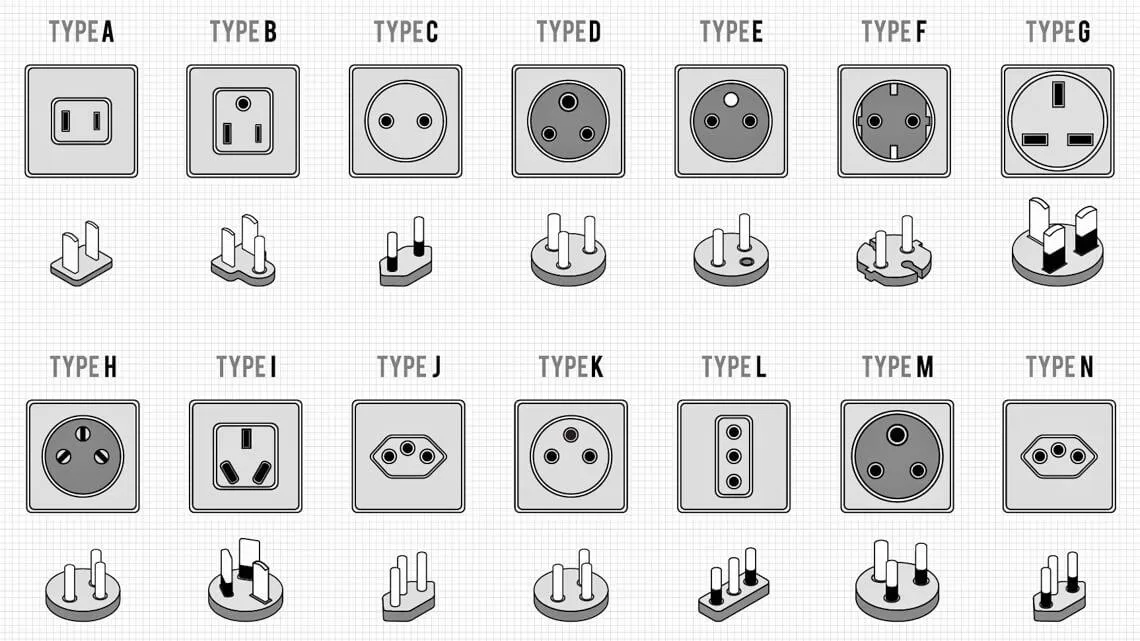 Why don’t all countries use the same plug?
Why don’t all countries use the same plug?
The main reason why not all countries use the same type of ingredients is because
Technological development is not globalized and it has not been reached
Consensus for standardization between manufacturers and countries.
Looking back, the race to spread the use of electricity began in the late 19th/early 20th century.
But at that time, it was impossible to predict that the world would change so much
And we will travel around the world carrying electrical appliances.
Almost all electrical appliances, whether lamps; Radios.
Televisions or industrial machines were repaired.
Therefore, it was only necessary that the plug match the type of wall plug.
No one imagined that in a few years we would be traveling with mobile phones
Cameras, hair dryers, headphones, whatever comes next.
Therefore, each manufacturer initially chose a type of ingredient based on the most
Types of components popular in the country where he was going to sell his electrical appliances.
The result is that nowadays there are 16 different types of plugs in the world.
They each receive a letter naming them.
We can find everything from Type A to Type N plugs.
We will review all plug-in models in the world.
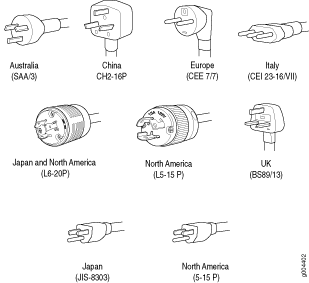 Types of components in Spain and Europe
Types of components in Spain and Europe
The type of plug you know best is the type
C or sometimes called “Euro-plug”.
This is the type mainly used in
Spain and most countries in Europe.
Type C consists of parallel circular pins while the wall plug has two
Two holes where it is connected.
What is colloquially known as male and female
, which is an expression we use for most cable connections.
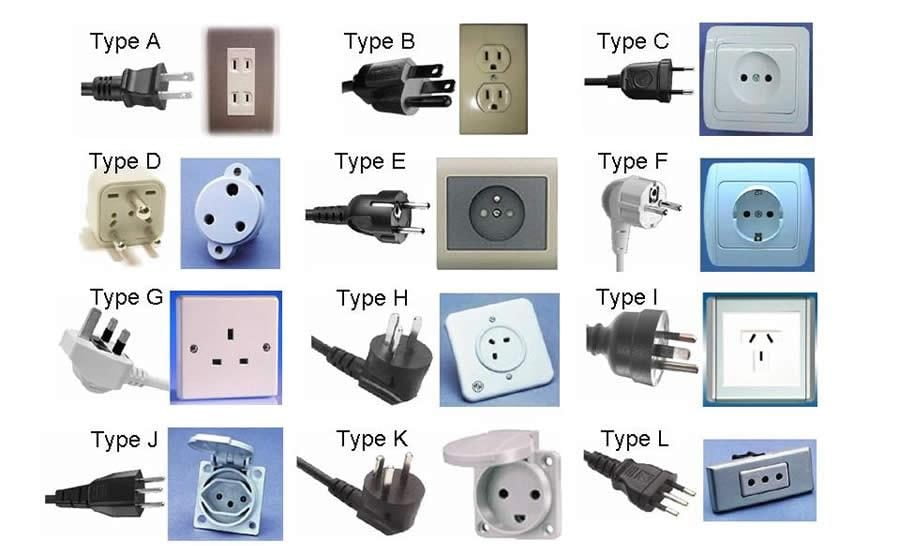 It is represented
It is represented
One of the main advantages of the Type C socket is that due to its two-pin simplicity,
It is compatible with E, F and K two-slot types
J, K or N with three holes in the female.
 Before taking a trip or if you plan to import an electrical appliance from another country
Before taking a trip or if you plan to import an electrical appliance from another country
, it is very important to know the types of plugs in the world.
It’s the best way to be prepared when you see those weird pins
Or those plugs that often remind us of an emoji.
If you leave Europe
The advice is to carry a universal adapter just in case.
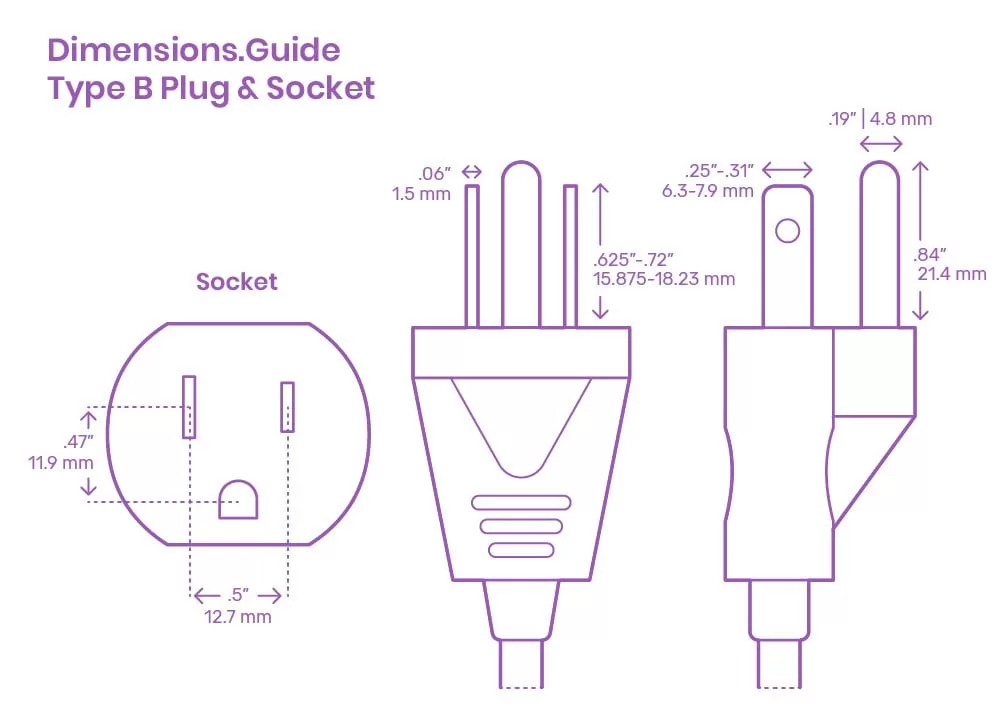 Type A/B plug, American and Japanese plugs
Type A/B plug, American and Japanese plugs
Both plug types A and B feature two parallel flat screws with a small hole.
One pin in the plug is usually thicker than the other.
These are the plugs you will find in the USA or Japan
You will need an adapter to be able to convert the cable from a plug type
C to this model using flat pins and wall holes.
The differences between models A and B are that the plug is of the type
B comes with a third rounded pin which is somewhat longer than the flat plug.
This third pin is used to connect to ground once connected.
If you travel to Japan or USA and find Type B wall plugs,
It is certain that in the first few days you will be reminded of the scared emoji face.
Other countries use it
If you travel a lot
, keep in mind that this type of A and B plug is also used in countries such as:
Saudi Arabia, Belize, Bolivia
, Canada, Cambodia, Colombia, North Korea,
South Korea, Costa Rica, Cuba,
Dominican Republic, Ecuador, El Salvador, Philippines, Guatemala and Guyana
Honduras, Jamaica, Jordan, Laos, Malaysia, Maldives, Mexico, Nicaragua, Panama, Peru, Puerto Rico, Thailand, Taiwan, Venezuela, Vietnam and Yemen.
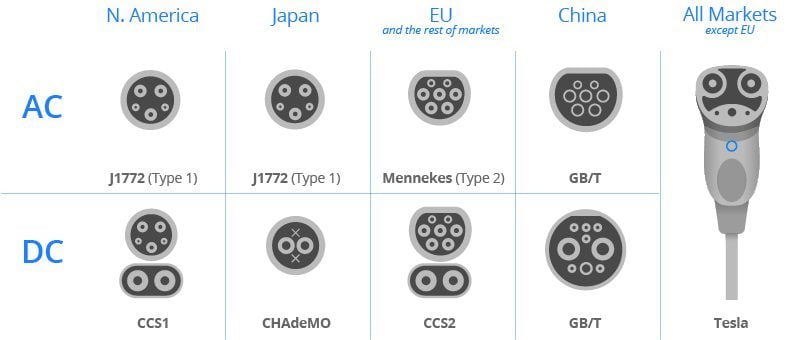 Type G plug, UK plug
Type G plug, UK plug
Although the most widespread model in Europe is Type C,
However the plug type from UK and Ireland is G.
The pin or male has three rectangular pins placed in a triangular or t-shaped position.
The third part of the pins of this type of plug acts as a ground
The plug also has a fuse inside it.
Other countries use it
Although it is the plug par excellence in the United Kingdom and Ireland, other countries have also adopted this model.
Almost all countries with close historical links to the British Empire, such as:
Cyprus, Malta, Singapore, Gibraltar, Jordan, Malaysia, Maldives, Nigeria, Pakistan
The Kingdom of Saudi Arabia, Tanzania and the United Arab Emirates.
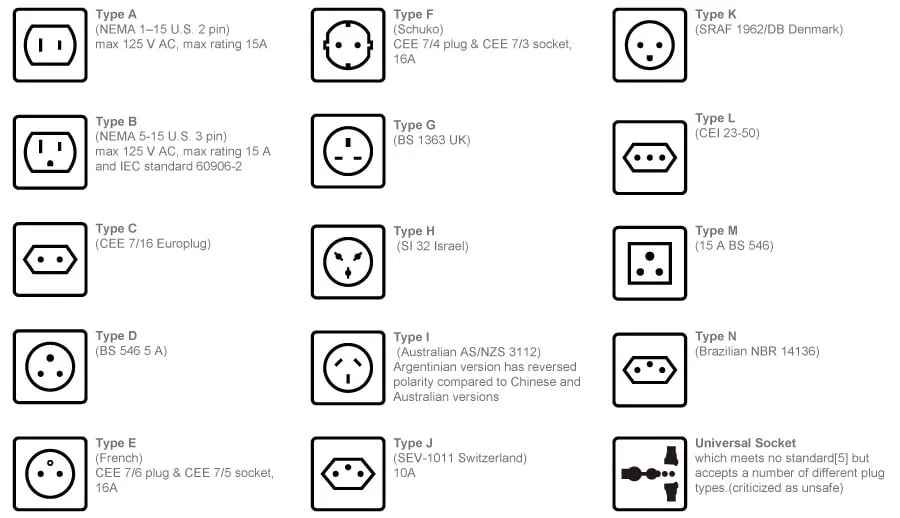 Plug type D is the travel plug to India
Plug type D is the travel plug to India
Type D plug is an adaptation of the UK plug,
But it changes the rectangular shape of the nails into a circular shape.
It is reminiscent of the plug type in Spain with the addition of a third pin.
The third pin, which is higher than the other two and slightly longer and thicker, is used as the ground pin.
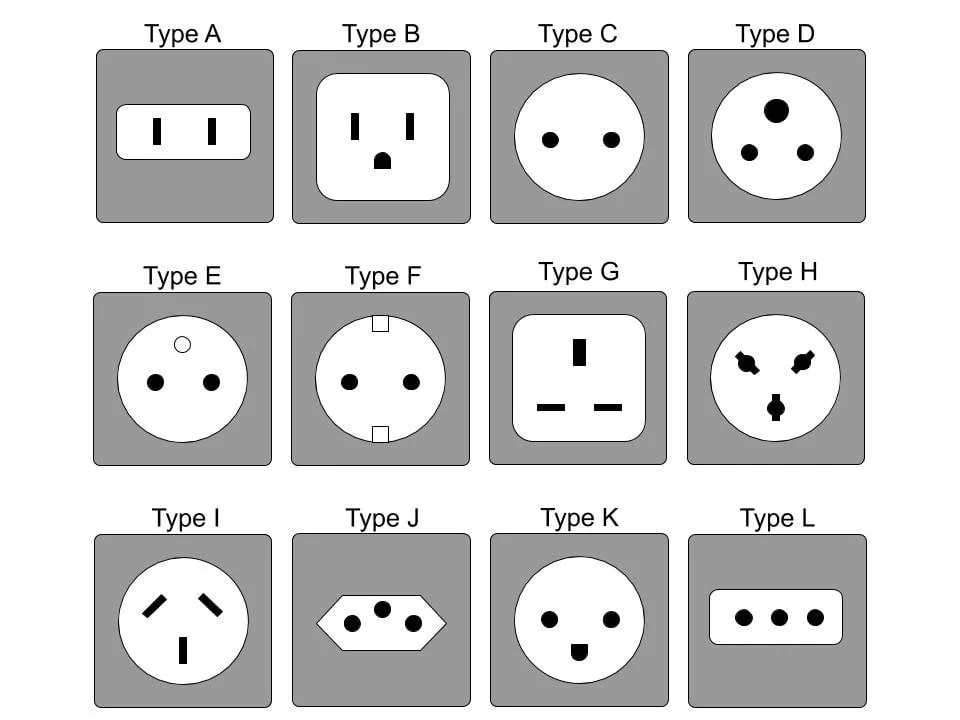 Other countries use it
Other countries use it
As with UK plugs
, Type D plugs are also used in other countries with strong relations with India,
Such as Nepal and Sri Lanka.
Namibia also uses this plug model, with it being the only African country to use it as the main model.
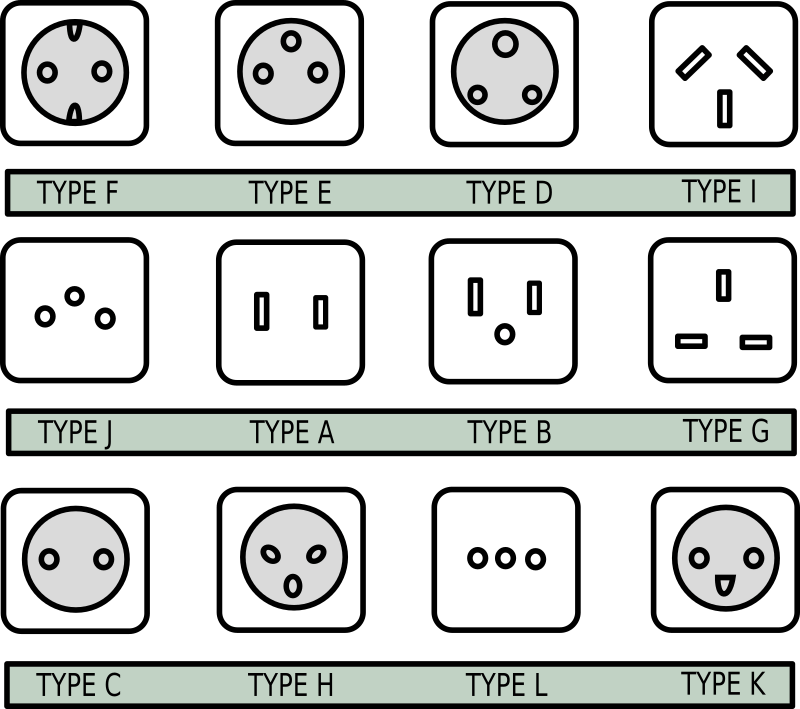 Type I plug, Australian and New Zealand plug
Type I plug, Australian and New Zealand plug
This model features three flat/rectangular pins arranged in a V shape.
The purpose of the upper pin,
Which is connected vertically, is the connection to the ground.
This is the type of plug used in Australia, New Zealand and Papua New Guinea.
Other countries use it
The first model is not the most applicable,
But it has an interesting dispersion on the map of world component types.
It is also used in China, Uzbekistan, Argentina and Uruguay.
 Other sockets in the world
Other sockets in the world
As you can see, the different types of plugs in the world have created a very diverse map of plugs and sockets all over the planet.
However, even if you think this can’t be more complicated
We still have some models to go through.
Type E plugs
Round pins in parallel position and one hole above them.
Into this slot, a third pin found on the wall plug enters.
Used in: Morocco, Tunisia and Senegal.
It is also found in some places in Europe such as France, Belgium, Poland and Slovakia.
This is compatible with Type C plugs which if you remember, is the plug used in Spain and most of Europe.
Type F plugs
Very similar to the E type but with two grounding clips = two clips that insert into the wall plug pins.
This is used in:
There is still a residual presence in several European countries, including Spain,
And in Jordan, South Korea, Indonesia, Thailand, Turkey, Uruguay and Vietnam.
It is compatible with Type C mainly used in Spain.
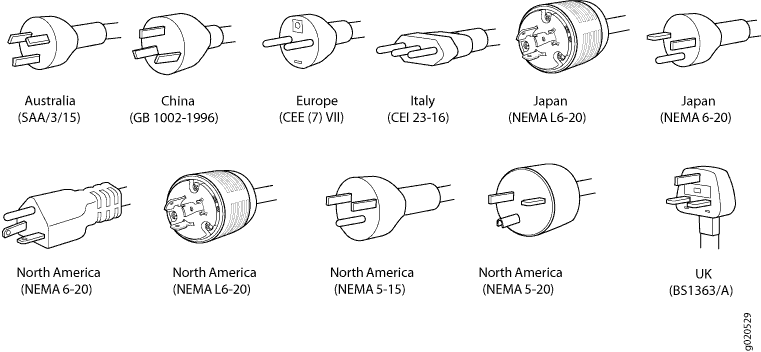 Type H sockets.
Type H sockets.
Three pins form a triangle, this is very similar to the E type plug.
This is only used in Israel. This is compatible with Type C used mainly in Spain.
“In Spain, Type C is used almost without exception,
It is most common in Europe and is compatible with types E, F, H and K.”
J type plugs.
Like Type C but with the addition of a third rounded pin at the top.
In Spain there are plug models, especially in table lamps and
Small devices that are very similar to this model, but without the third pin.
This is used in:
Switzerland, Jordan, Liechtenstein, Madagascar and the Maldives.
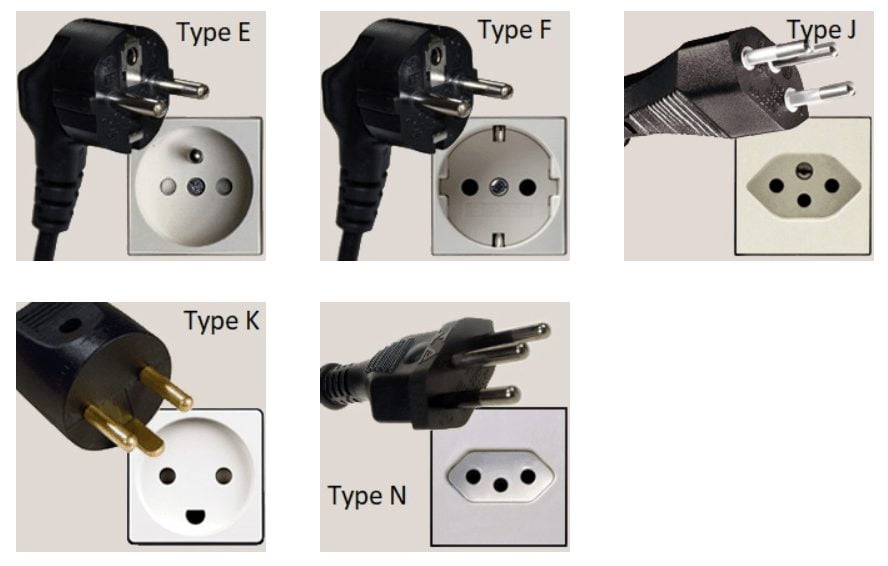 K type plugs.
K type plugs.
Two are circular and the third is semi-circular at the bottom to connect to the grounding of the wall plug.
This is used in:
Denmark, Guinea, Madagascar, Maldives and Senegal.
This is also compatible with the Type C Spanish plug.
Type L. Plugs
This has three round pins placed in a line.
The middle pin corresponds to the grounding pin.
This is used in:
Parts of Italy, Chile, the Maldives and Uruguay. You will need an adapter.
Type M plugs
Its three pins also form a triangle and are round.
Two of them are parallel, while the one at the top is thicker and longer in length (grounding).
This is used in:
South Africa, India, Israel, Malaysia, Mozambique, Nepal, Pakistan and Singapore.
 Type N. Plugs
Type N. Plugs
This is one of the most curious plug-in models in the world.
It was created in order to become a kind of global component to be implemented in all countries.
A type of universal USB for electricity.
The result, so you get an idea of how complex standardization is, is that only two countries use it.
The N plug type is similar to the C type, but has a third pin, ground, located in the middle of the two types and slightly higher.
used in:
Only in South Africa and parts of Brazil.
“If you’re traveling outside of Europe, you can have peace of mind by bringing a universal adapter that works in any of these plugs.”
Plug types and voltage
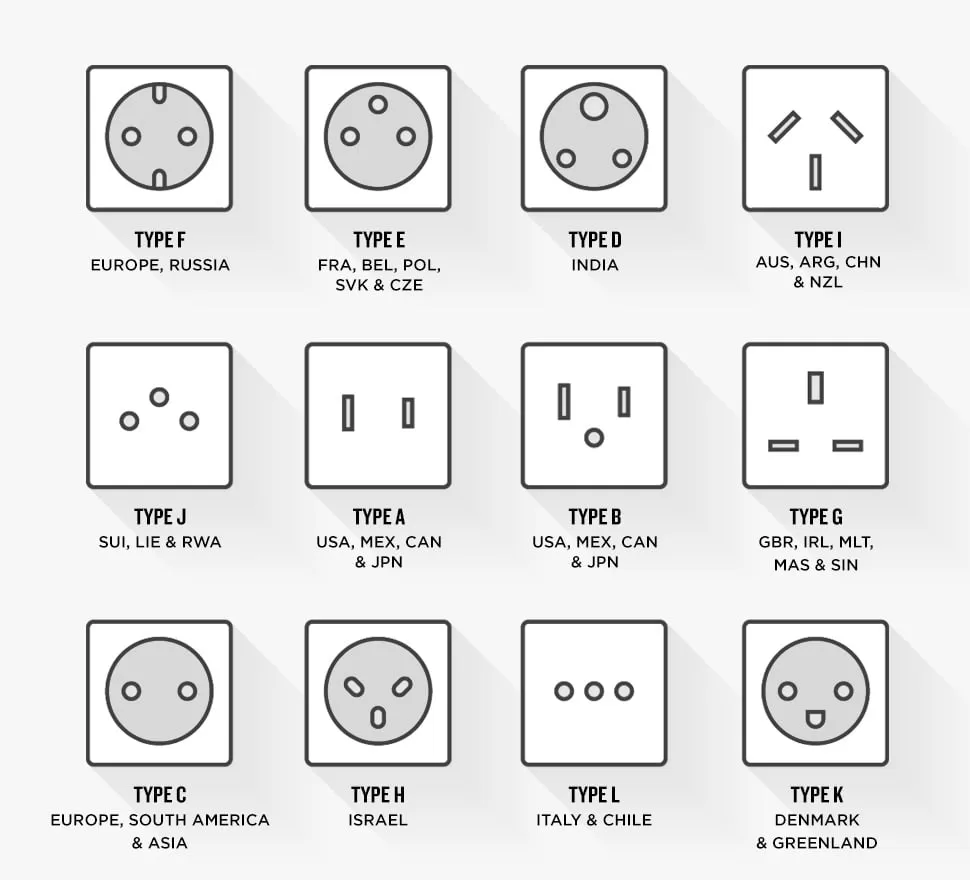 Despite all the types of plugs in the world we’ve just looked at, there’s another factor we need to consider when traveling.
Despite all the types of plugs in the world we’ve just looked at, there’s another factor we need to consider when traveling.
Electrical voltage, measured in volts (V), is not the same everywhere in the world.
In this case, fortunately we do not have that much variety.
The vast majority of countries supply electricity with a voltage between 220 and 240 volts.
However, it is common for installations to have a voltage between 110 and 120 volts in the Americas.
Most transformers and plug adapters are now ready to handle both voltages.
However ,
You should be extremely careful when connecting devices designed for 110V
If you connect them to 220V networks and the physical device is not adapted.
 To know our latest products and special offers, please subscribe to our social media pages:
To know our latest products and special offers, please subscribe to our social media pages:
Our Facebook page=> Gahzly store
Our Twitter page=> Gahzly store


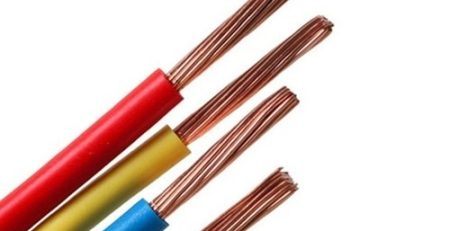

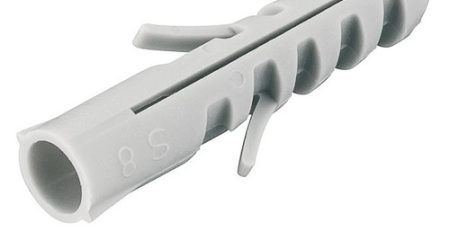

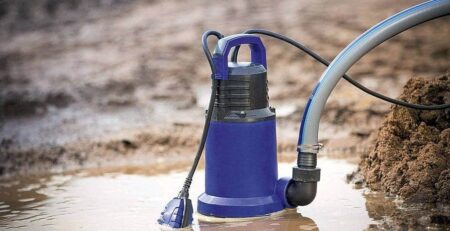
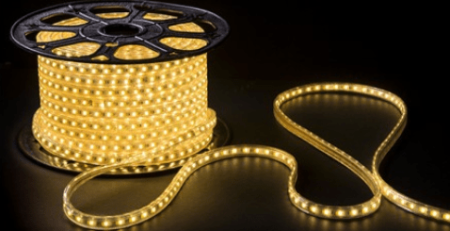

Leave a Reply
You must be logged in to post a comment.